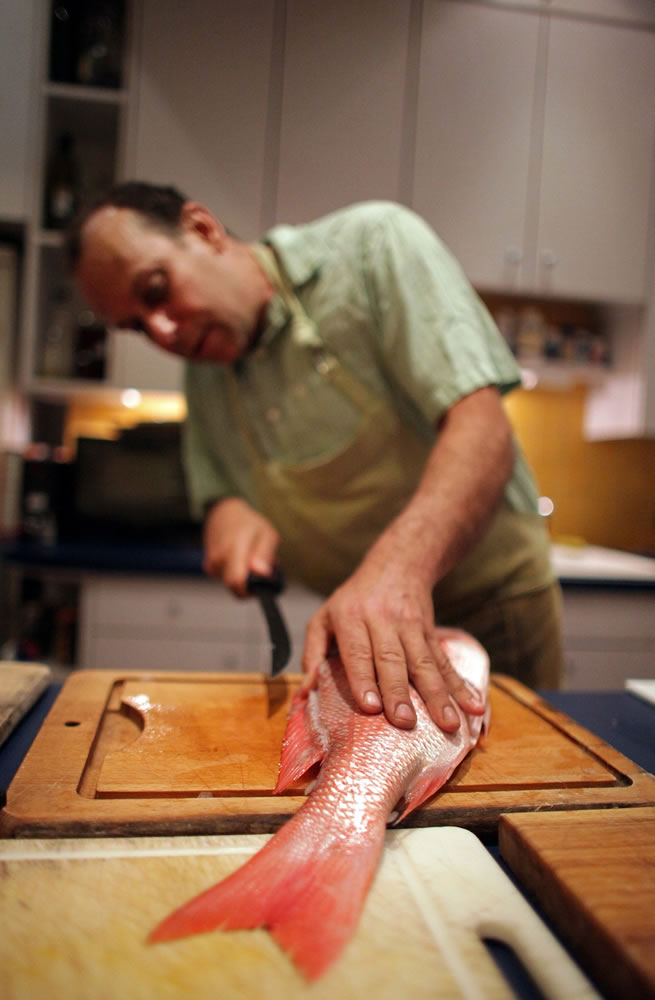Author Paul Greenberg was standing in his Manhattan kitchen, cleaver in hand. He had already fluidly removed two fillets from a gleaming red snapper, shipped overnight from the Gulf of Mexico. Now it was time to take off the head, which he would use to make a spicy Korean soup. “This,” he said with a laugh, “is where it gets gnarly.” Then with a swift chop he severed the fish’s head from its body.
It would have been easier to buy a few fillets or, for this dish, to ask a fishmonger for the head. (Sometimes they’ll give it to you free.) But Greenberg, best-selling author of “Four Fish: The Future of the Last Wild Food,” wanted to make use of a whole snapper in service of a larger point: Americans need to eat more American seafood.
It’s a point he makes compellingly clear in his new book, “American Catch: The Fight for Our Local Seafood” (Penguin Press, June 2014). The United States controls more ocean than any other country on Earth. Yet despite our 2.8 billion acres of ocean, 94,000 miles of coastline and 3.5 million miles of rivers, 91 percent of the seafood Americans eat is imported.
It gets fishier, Greenberg says. Much of what we import is farmed; shrimp and tilapia top the list. Meanwhile, one-third of what we catch is sent overseas. “There are of course subtleties to the ridiculous international fish swap we’re engaged in here in America, but after three years of pounding my head against the data, what I realized is that we’re basically low-grading our seafood supply,” Greenberg said. “We’re sending the good wild American stuff that makes you heart-healthy and smart to Asia and importing all this farmed stuff from Asia that doesn’t really do too much for you from a health perspective.”



